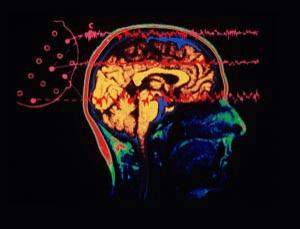
How chaos drives the brain
(NewScientist) -- HAVE you ever experienced that eerie feeling of a thought popping into your head as if from nowhere, with no clue as to why you had that particular idea at that particular time? You may think that such fleeting thoughts, however random they seem, must be the product of predictable and rational processes. After all, the brain cannot be random, can it? Surely it processes information using ordered, logical operations, like a powerful computer?
Actually, no. In reality, your brain operates on the edge of chaos. Though much of the time it runs in an orderly and stable way, every now and again it suddenly and unpredictably lurches into a blizzard of noise.
Neuroscientists have long suspected as much. Only recently, however, have they come up with proof that brains work this way. Now they are trying to work out why. Some believe that near-chaotic states may be crucial to memory, and could explain why some people are smarter than others.
In technical terms, systems on the edge of chaos are said to be in a state of "self-organised criticality". These systems are right on the boundary between stable, orderly behaviour - such as a swinging pendulum - and the unpredictable world of chaos, as exemplified by turbulence.
The quintessential example of self-organised criticality is a growing sand pile. As grains build up, the pile grows in a predictable way until, suddenly and without warning, it hits a critical point and collapses. These "sand avalanches" occur spontaneously and are almost impossible to predict, so the system is said to be both critical and self-organising. Earthquakes, avalanches and wildfires are also thought to behave like this, with periods of stability followed by catastrophic periods of instability that rearrange the system into a new, temporarily stable state.
Self-organised criticality has another defining feature: even though individual sand avalanches are impossible to predict, their overall distribution is regular. The avalanches are "scale invariant", which means that avalanches of all possible sizes occur. They also follow a "power law" distribution, which means bigger avalanches happen less often than smaller avalanches, according to a strict mathematical ratio. Earthquakes offer the best real-world example. Quakes of magnitude 5.0 on the Richter scale happen 10 times as often as quakes of magnitude 6.0, and 100 times as often as quakes of magnitude 7.0.
These are purely physical systems, but the brain has much in common with them. Networks of brain cells alternate between periods of calm and periods of instability - "avalanches" of electrical activity that cascade through the neurons. Like real avalanches, exactly how these cascades occur and the resulting state of the brain are unpredictable.
More/Source: http://snipurl.com/la504



